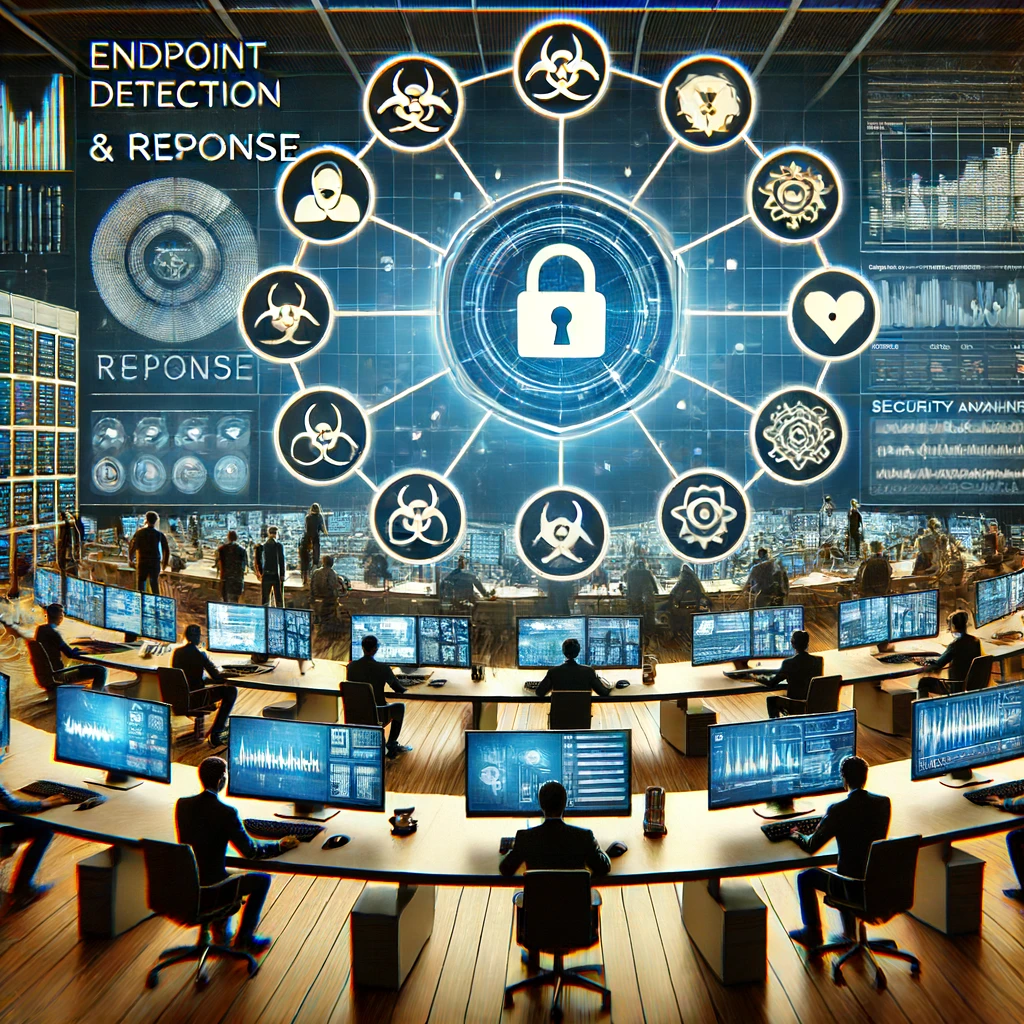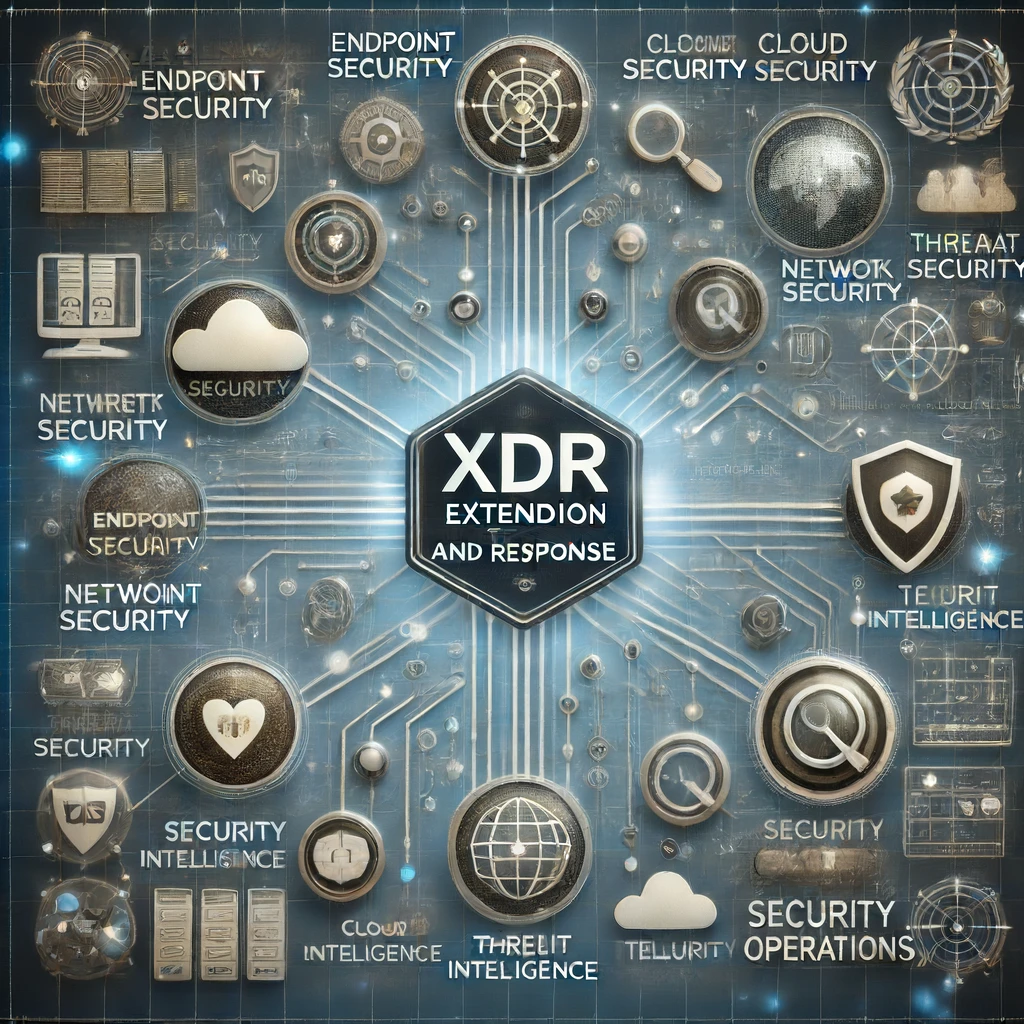
Absolutely Confident
There is absolutely no way that you can hack my desktop, tablet, laptop, cell phone, whatever.
- The manufacturer of my operating system is a global organization.
- The manufacturer of my operating system has videos and papers on the Internet testifying to the high level of security applied to their services.
- The manufacturer of my operating system has videos and papers testifying to the high level of competence that their certified security professionals are required to adhere.
- The manufacturer of my operating system offers free training on how to apply their tools to minimize the success of an attack.
- There are many tools that can be used to scan my operating system and will notify me where there are security vulnerabilities within my operating system.
There is just no way.

Another View
As with so many things in life, perception is seldomly reality.
There is a word – holistic. And a phrase “holistic approach to security”.
Taking a holistic approach to defending against cyber attacks means considering and addressing all aspects of cybersecurity comprehensively rather than focusing on isolated elements. This approach encompasses a broad range of strategies and measures designed to protect an organization’s entire digital ecosystem. Here are key components of a holistic cybersecurity strategy:
- Technology and Infrastructure:
- Network Security: Implementing firewalls, intrusion detection/prevention systems, and secure network architecture.
- Endpoint Security: Protecting all devices connected to the network, including computers, mobile devices, and IoT devices.
- Data Encryption: Ensuring that data is encrypted both in transit and at rest to prevent unauthorized access.
- Human Factors:
- Training and Awareness: Regularly educating employees about phishing, social engineering, and other common cyber threats.
- Access Control: Enforcing strict access controls to ensure that only authorized personnel have access to sensitive information.
- Incident Response Plans: Preparing staff to respond quickly and effectively to security incidents.
- Processes and Policies:
- Regular Audits and Assessments: Conducting frequent security audits and vulnerability assessments to identify and mitigate risks.
- Security Policies: Developing and enforcing comprehensive security policies and procedures.
- Compliance: Ensuring compliance with relevant regulations and standards, such as GDPR, HIPAA, or ISO/IEC 27001.
- Physical Security:
- Securing Physical Access: Controlling physical access to critical IT infrastructure and ensuring that only authorized personnel can enter sensitive areas.
- Surveillance and Monitoring: Using surveillance cameras and monitoring systems to detect and respond to physical security breaches.
- Incident Management:
- Detection and Monitoring: Implementing continuous monitoring to detect anomalies and potential threats in real-time.
- Response and Recovery: Establishing a clear incident response plan to contain and remediate attacks swiftly, and a recovery plan to restore normal operations.
- Integration and Collaboration:
- Cross-Functional Collaboration: Ensuring collaboration between IT, legal, compliance, and other departments to create a unified defense strategy.
- Third-Party Security: Managing and monitoring the security practices of third-party vendors and partners.
- Continuous Improvement:
- Updating and Patching: Regularly updating and patching systems and software to protect against known vulnerabilities.
- Threat Intelligence: Staying informed about the latest threats and attack vectors to adapt defenses accordingly.
- Feedback Loops: Learning from past incidents and continuously improving security measures.
By adopting a holistic approach, organizations can create a robust defense mechanism that addresses the multifaceted nature of cyber threats, ensuring comprehensive protection of their digital assets.
The list is a good start to understanding a robust set of security requirements. However, missing from the list is understanding culture and human behavior.
From Treadstone-71:
“The Mind at War The Role of INTJ Personalities in Cyber Defense
Our analysis explores the intricate dynamics of INTJ personality types within cyber defense and intelligence teams, mainly focusing on how adversaries exploit their traits in cognitive warfare. The research underscores the propensity of INTJs to pride themselves on their knowledge and analytical skills, highlighting how these characteristics make them susceptible to sophisticated manipulation tactics during cyber-attack or threat scenarios. We examine various strategies employed by adversaries, such as intellectual ego flattery, presenting misleading information, creating echo chambers, and exploiting the INTJ’s preference for complex, technological solutions.
The paper further examines the broader implications of INTJ-dominated teams in cybersecurity. We identify critical areas of potential vulnerability, including a tendency to focus on long-term strategies potentially at the expense of immediate threats, a preference for working independently, which may hinder necessary collaboration, and a propensity to undervalue emotional intelligence. Additionally, the analysis considers the INTJ’s discomfort with hierarchical structures and their inclination towards complex solutions, which might overlook simpler yet effective alternatives.
In response to these identified vulnerabilities, the research advocates fostering a culture of critical thinking, diversity in problem-solving approaches, and continuous training to recognize and mitigate cognitive biases. It emphasizes cultivating humility, encouraging diverse viewpoints, and implementing checks and balances in decision-making processes among INTJ-dominated groups. The paper highlights the necessity of balancing technological prowess with an awareness of its limitations and potential for manipulation.
The analysis concludes that building resilience in cyber defense and intelligence teams requires a holistic approach, such as adapting strategies to counter potential manipulations, fostering adaptability, promoting continuous learning in emotional intelligence and interpersonal skills, and integrating diverse perspectives and methodologies. By doing so, teams develop robust defenses against the evolving landscape of cyber threats and ensure a cohesive and effective response to cyber warfare challenges.”
A key take away is that an individual/team can be extremely technically competent, and have a deep understanding of security controls, but unless that individual/team understands differences in cultures and how those differences influences choices, previous efforts will fail.

Endpoint Detection and Response
It is not wise to think that if your desktop, laptop, tablet and/or cell phone has virus protection, that the resources are not vulnerable to compromise. If there is value for a resource and that value is more than the cost to compromise, the resource is a worthwhile target.
Need to understand what Endpoint Detection (EDR) and Response is and why there is value in by passing it.
Endpoint Detection and Response (EDR) is a cybersecurity technology designed to monitor, detect, and respond to threats on endpoints, such as desktops, laptops, servers, and mobile devices. Here’s a detailed explanation:
Key Components of EDR:
- Continuous Monitoring:
- EDR solutions continuously monitor endpoint activities to detect potential threats in real-time. This involves collecting and analyzing data from endpoints to identify suspicious behavior.
- Threat Detection:
- Using advanced analytics, machine learning, and behavioral analysis, EDR systems detect anomalies and potential threats such as malware, ransomware, and unauthorized access attempts.
- Incident Response:
- Once a threat is detected, EDR solutions provide tools for responding to incidents. This includes isolating the affected endpoint, removing malicious files, and restoring systems to a secure state.
- Forensic Analysis:
- EDR systems allow security teams to perform forensic analysis to understand the nature and scope of an attack. This helps in identifying the root cause and improving future defenses.
- Data Collection:
- EDR continuously collects data on endpoint activities, including process execution, network connections, file modifications, and registry changes. This data is stored for real-time and historical analysis.
- Alerting and Reporting:
- EDR solutions generate alerts and detailed reports to inform security teams about detected threats, their severity, and recommended response actions.
How EDR Works:
- Data Collection:
- Agents installed on endpoints collect data on various activities and send it to a centralized EDR platform for analysis.
- Data Analysis:
- The EDR platform analyzes the collected data using various techniques such as signature-based detection, heuristic analysis, and behavioral monitoring to identify potential threats.
- Alert Generation:
- When suspicious activity is detected, the EDR system generates alerts and prioritizes them based on the severity and potential impact of the threat.
- Threat Mitigation:
- Security teams use EDR tools to mitigate threats. This can involve isolating the endpoint, killing malicious processes, removing infected files, and applying patches or updates.
- Investigation and Remediation:
- EDR provides detailed information about the threat, enabling security analysts to investigate the incident, determine the root cause, and implement remediation steps to prevent future occurrences.
Benefits of EDR:
- Enhanced Visibility: Provides comprehensive visibility into endpoint activities, making it easier to detect and respond to threats.
- Rapid Response: Enables quick detection and response to threats, reducing the potential damage and impact on the organization.
- Improved Security Posture: Helps in identifying vulnerabilities and implementing security measures to strengthen defenses.
- Reduced Dwell Time: Reduces the time that threats remain undetected in the network, minimizing potential damage.
EDR Use Cases:
- Detecting Malware: Identifying and responding to malware infections that bypass traditional antivirus solutions.
- Ransomware Protection: Detecting and mitigating ransomware attacks before they can encrypt critical data.
- Insider Threat Detection: Monitoring for suspicious activities by employees or other insiders that may indicate malicious intent.
- Advanced Persistent Threats (APTs): Detecting and responding to sophisticated attacks that aim to gain prolonged access to networks.
EDR is an essential component of modern cybersecurity strategies, providing organizations with the tools needed to protect their endpoints from a wide range of threats.

Extended Detection and Response
Extended Detection and Response (XDR) is an advanced cybersecurity technology that integrates and correlates data across multiple security layers to provide a comprehensive and coordinated approach to threat detection, investigation, and response. Unlike traditional Endpoint Detection and Response (EDR) solutions that focus solely on endpoint data, XDR extends its capabilities to include data from various sources such as networks, servers, email systems, cloud environments, and more.
Key Features of XDR:
- Data Integration:
- XDR consolidates data from multiple security products, including endpoint, network, email, and cloud security solutions. This integration enables a holistic view of the security landscape.
- Advanced Analytics:
- Leveraging machine learning and artificial intelligence, XDR analyzes the integrated data to detect complex threats that might evade individual security solutions. This includes behavioral analysis and anomaly detection.
- Threat Correlation:
- XDR correlates events and alerts across different security layers to identify multi-vector attacks and advanced persistent threats (APTs). This helps in understanding the full scope of an attack.
- Automated Response:
- XDR provides automated response capabilities to contain and mitigate threats quickly. This can include isolating affected endpoints, blocking malicious IP addresses, and initiating remediation actions.
- Unified Visibility:
- By providing a single pane of glass for security monitoring, XDR enhances visibility across the entire IT environment. This unified view simplifies threat detection and investigation processes.
- Threat Hunting:
- XDR platforms often include threat hunting tools that allow security analysts to proactively search for hidden threats based on hypotheses and indicators of compromise (IoCs).
How XDR Works:
- Data Collection and Aggregation:
- XDR collects and aggregates data from various security products and sources, such as EDR, Network Detection and Response (NDR), email security, cloud security, and identity management systems.
- Data Normalization:
- The collected data is normalized and standardized to ensure consistency and compatibility across different security tools and sources.
- Threat Detection:
- Using advanced analytics and machine learning, XDR analyzes the aggregated data to detect threats. This includes identifying patterns, anomalies, and suspicious activities that indicate potential attacks.
- Correlation and Contextualization:
- XDR correlates events and alerts across different security layers to provide context and a comprehensive view of the attack. This helps in understanding the attack chain and identifying the root cause.
- Incident Response:
- XDR provides automated and manual response capabilities to address detected threats. This includes isolating affected systems, blocking malicious traffic, and initiating remediation workflows.
- Reporting and Visualization:
- XDR platforms offer reporting and visualization tools to present insights and findings in an accessible format. This helps security teams track incidents, analyze trends, and improve overall security posture.
Benefits of XDR:
- Comprehensive Threat Detection: By integrating data from multiple sources, XDR can detect complex and multi-vector attacks that might go unnoticed by siloed security solutions.
- Improved Response Time: Automated response capabilities enable faster containment and mitigation of threats, reducing the potential impact on the organization.
- Enhanced Visibility: A unified view of the security environment provides better visibility into potential threats and attack patterns.
- Reduced Alert Fatigue: By correlating and prioritizing alerts, XDR reduces false positives and helps security teams focus on the most critical threats.
- Proactive Threat Hunting: Advanced threat hunting tools allow security teams to proactively search for and address potential threats before they can cause significant harm.
XDR Use Cases:
- Advanced Persistent Threats (APTs): Detecting and responding to sophisticated attacks that leverage multiple vectors to gain prolonged access to networks.
- Ransomware Attacks: Identifying and mitigating ransomware attacks by correlating endpoint, network, and email data to detect early signs of an attack.
- Insider Threats: Monitoring for suspicious activities across endpoints, networks, and cloud environments to detect and respond to insider threats.
- Supply Chain Attacks: Identifying and mitigating attacks that target supply chain partners by analyzing data from multiple security layers.
XDR represents a significant advancement in cybersecurity by providing a comprehensive, integrated approach to threat detection and response, enabling organizations to more effectively protect against a wide range of threats.

Detecting if a bypass of EDR (Endpoint Detection and Response) or XDR (Extended Detection and Response) has been accomplished on a local machine involves several steps. These steps include analyzing system behavior, inspecting logs, checking for anomalies, and using specific tools designed for security and forensics. Here’s a structured approach to detect potential EDR/XDR bypasses:
1. Analyze System Behavior
a. Unusual Network Activity
- Monitor for unexpected or excessive network connections, especially to unknown or suspicious IP addresses.
- Check for unusual patterns, such as connections during off-hours or data exfiltration activities.
b. Performance Degradation
- Look for significant changes in system performance, such as high CPU or memory usage, which could indicate the presence of malicious processes.
2. Inspect System Logs
a. Event Logs
- Check Windows Event Logs or Linux system logs for unusual events, such as failed login attempts, unexpected system reboots, or service interruptions.
b. Security Logs
- Review security logs generated by EDR/XDR solutions for any alerts or warnings that might indicate a compromise.
3. Check for Anomalies
a. Process Inspection
- Use tools like Task Manager (Windows) or
top/htop(Linux) to identify unusual or unknown processes running on the system. - Use command-line tools to list processes and their details:
- Windows:
tasklist - Linux:
ps aux
- Windows:
b. File Integrity
- Check for changes in critical system files or configurations using tools like Tripwire or built-in utilities like
sfc(System File Checker) on Windows.
c. Registry Changes (Windows)
- Inspect the Windows Registry for unauthorized changes, particularly in startup items and services.
4. Use Forensic Tools
a. Volatility
- Use Volatility3 to analyze memory dumps for signs of process injection, code hooking, or other memory-based anomalies.bash

Analyzing Bypass of EDR or XDR on a Remote Machine vs. Local Machine
Introduction
Endpoint Detection and Response (EDR) and Extended Detection and Response (XDR) systems are crucial for maintaining the security of computing environments. When a potential bypass of these systems is suspected, it’s essential to analyze the incident carefully to understand how the security measures were circumvented. This analysis is best conducted on a remote machine rather than the local machine where the bypass is suspected. Here’s why:
1. Preservation of Evidence
- Integrity of Data: Analyzing on a remote machine helps preserve the integrity of the evidence. Local analysis can alter critical logs or artifacts, making it harder to reconstruct the sequence of events accurately.
- Chain of Custody: Remote analysis maintains a clear chain of custody, which is vital if the analysis results need to be used in legal proceedings.
2. Isolation of Threats
- Containment: Conducting the analysis remotely ensures that any active malicious processes or files do not continue to operate or propagate on the local machine, potentially causing further damage.
- Preventing Re-Infection: If the local machine is still compromised, it could interfere with the analysis process or reintroduce the threat, undermining the investigation.
3. Unbiased Analysis Environment
- Clean Environment: A remote analysis is performed in a clean and controlled environment, free from the potential influences or manipulations that might exist on the compromised local machine.
- Consistent Baseline: Remote systems can be standardized to provide a consistent baseline for analysis, ensuring that findings are based on the evidence and not influenced by the local machine’s unique configurations or state.
4. Resource Management
- Performance Overhead: Analyzing on the local machine can consume significant system resources, impacting the performance and usability of the machine for other critical tasks.
- Specialized Tools: Remote analysis environments can be equipped with specialized tools and resources that might not be available or feasible to run on the local machine.
5. Expertise and Collaboration
- Access to Specialists: Remote analysis allows security experts and analysts to collaborate more effectively, regardless of their physical location. This ensures that the investigation benefits from a broader range of expertise.
- Centralized Analysis: Using remote systems can centralize the analysis process, making it easier to manage, document, and share findings with relevant stakeholders.
Conclusion
Conducting the analysis of a bypass of EDR or XDR on a remote machine rather than the local machine provides numerous advantages. It ensures the integrity and preservation of evidence, contains and isolates threats, provides an unbiased analysis environment, optimizes resource management, and facilitates expertise and collaboration. These benefits collectively lead to a more thorough and reliable investigation, which is essential for understanding and mitigating the bypass effectively.

Volatility3, the latest version of the Volatility memory forensics framework, is a powerful tool for analyzing memory dumps and can be used to detect various types of malicious activities, including the bypassing of Endpoint Detection and Response (EDR) and Extended Detection and Response (XDR) systems. Here’s a comprehensive guide on how to use Volatility3 for this purpose:
1. Understanding the Basics
Volatility3 allows for in-depth analysis of memory dumps, providing insights into the state of the system at the time the dump was taken. Bypassing EDR/XDR involves techniques that hide or mask malicious activities from security tools.
2. Obtaining a Memory Dump
To analyze a system for EDR/XDR bypass attempts, you first need a memory dump from the suspected machine. Tools like FTK Imager, DumpIt, or built-in OS utilities can be used to create a memory dump.
3. Setting Up Volatility3
Download and install Volatility3 from the official repository. Ensure you have the necessary dependencies installed.
git clone https://github.com/volatilityfoundation/volatility3.git
cd volatility3
pip install -r requirements.txt
4. Analyzing the Memory Dump
a. Checking for Loaded Modules
Analyze the loaded kernel and user-space modules to identify any suspicious or unknown modules which might be part of an EDR/XDR bypass.
vol.py -f memory.dmp windows.info
vol.py -f memory.dmp windows.modules
Look for unknown or suspicious modules that do not match the standard Windows kernel modules.
b. Investigating Kernel Hooks
Malware often hooks kernel functions to hide its presence. Use Volatility3 to check for such hooks.
vol.py -f memory.dmp windows.ssdt
vol.py -f memory.dmp windows.gdt
Check for any hooks or discrepancies that could indicate an attempt to bypass security monitoring.
c. Identifying Hidden Processes and Drivers
EDR/XDR bypass techniques often involve hiding malicious processes and drivers.
vol.py -f memory.dmp windows.pslist
vol.py -f memory.dmp windows.driverscan
Compare the output with the known legitimate processes and drivers. Hidden or unusual entries might be indicative of malicious activities.
d. Inspecting Network Connections
Analyze network connections to detect any unusual activity that could signify bypassed security controls.
vol.py -f memory.dmp windows.netscan
dentify unexpected network connections, particularly those that should be blocked or monitored by EDR/XDR solutions.
5. Advanced Detection Techniques
a. Memory Artifacts
Look for specific memory artifacts that EDR/XDR bypass tools leave behind.
vol.py -f memory.dmp windows.malfind
vol.py -f memory.dmp windows.apihooks
These plugins help in detecting injected code and API hooks commonly used to evade detection.
b. Analyzing Suspicious Handles
Malware often opens handles to various system objects. Inspecting these can reveal hidden activities.
vol.py -f memory.dmp windows.handles
Identify handles that do not correspond to legitimate processes or services.
6. Correlating with Known Indicators
Use threat intelligence to correlate findings from Volatility3 with known indicators of compromise (IOCs) related to EDR/XDR bypass techniques.
7. Reporting and Mitigation
Document your findings in a structured report, highlighting potential EDR/XDR bypass activities. Provide recommendations for mitigation based on the detected techniques, such as patching vulnerable systems, updating security policies, or improving detection rules.
Example Command Execution
Below is an example sequence of Volatility3 commands for a comprehensive analysis:
vol.py -f memory.dmp windows.info
vol.py -f memory.dmp windows.modules
vol.py -f memory.dmp windows.pslist
vol.py -f memory.dmp windows.driverscan
vol.py -f memory.dmp windows.ssdt
vol.py -f memory.dmp windows.gdt
vol.py -f memory.dmp windows.netscan
vol.py -f memory.dmp windows.malfind
vol.py -f memory.dmp windows.apihooks
vol.py -f memory.dmp windows.handles
Conclusion
Using Volatility3 to detect EDR/XDR bypass involves a systematic approach to analyze the memory dump for hidden or suspicious activities. By leveraging the various plugins available in Volatility3, you can uncover indicators of malicious behavior and take appropriate actions to strengthen your security posture.
Word to the wise
Do not assume that because your resource has end point protection in place, that the resource is not vulnerable to attack. If the resource has value, and the value is less than the cost to attack the resource, the resource will be attacked–and compromised.
Discover more from Threat Detection
Subscribe to get the latest posts sent to your email.
